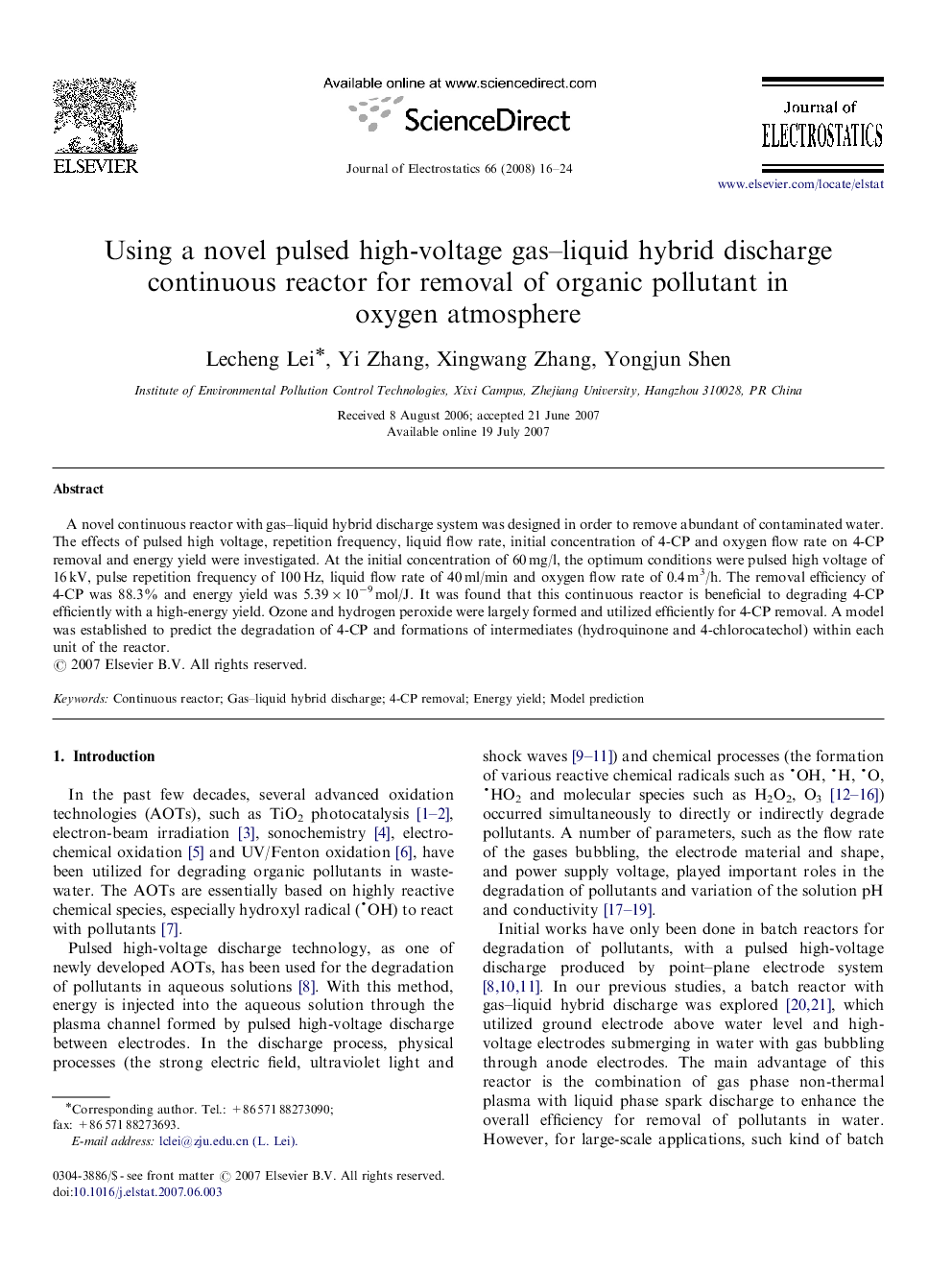| Article ID | Journal | Published Year | Pages | File Type |
|---|---|---|---|---|
| 724732 | Journal of Electrostatics | 2008 | 9 Pages |
A novel continuous reactor with gas–liquid hybrid discharge system was designed in order to remove abundant of contaminated water. The effects of pulsed high voltage, repetition frequency, liquid flow rate, initial concentration of 4-CP and oxygen flow rate on 4-CP removal and energy yield were investigated. At the initial concentration of 60 mg/l, the optimum conditions were pulsed high voltage of 16 kV, pulse repetition frequency of 100 Hz, liquid flow rate of 40 ml/min and oxygen flow rate of 0.4 m3/h. The removal efficiency of 4-CP was 88.3% and energy yield was 5.39×10−9 mol/J. It was found that this continuous reactor is beneficial to degrading 4-CP efficiently with a high-energy yield. Ozone and hydrogen peroxide were largely formed and utilized efficiently for 4-CP removal. A model was established to predict the degradation of 4-CP and formations of intermediates (hydroquinone and 4-chlorocatechol) within each unit of the reactor.
